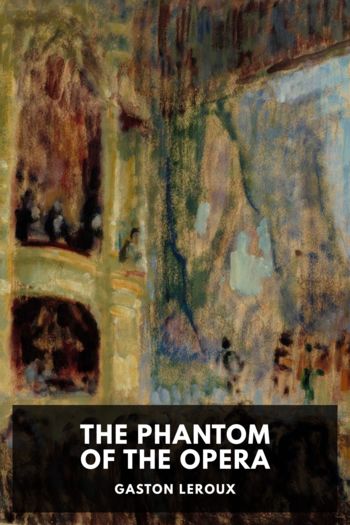The Banker Who Crushed His Diamonds Furquan Moharkan (books to read in your 20s .TXT) 📖

- Author: Furquan Moharkan
Book online «The Banker Who Crushed His Diamonds Furquan Moharkan (books to read in your 20s .TXT) 📖». Author Furquan Moharkan
One such aggrieved retail investor told me: ‘I kept always thinking that someone will bail out the bank. I thought that share prices will go up gradually. What happened in the bank is very bad… It’s like the fence eating the crop. Retail investors can’t do anything. He [Rana] will always be hoping for reversal of fortune. For me, after losing more than Rs 100 per share, it did not make sense to sell and save some Rs 30–40 per share.’
Even after this crisis, Rana Kapoor wasn’t one to be broken. His friend, who attended the trials, told me that at times Rana Kapoor would argue his case himself, sometimes better than his celebrated lawyer.
Radha Kapoor Khanna in her statement recorded on 7 March 2020, as the ED chargesheet reveals, said that she had had no knowledge of the source of investment into Morgan Credit Pvt. Ltd and YES Capital Pvt. Ltd — the holding promoter companies in YES Bank where Rana’s three daughters held one-third ownership each. This brings us to two possible conclusions: either she actually didn’t know the source of money, or she was lying to the investigators — both of which are a possibility. In the case of she not knowing, it is worth wondering how she was among the promoter group of India’s fourth largest private bank, when she didn’t even know the source of the money in her own company? In that case, this is nothing but the highest level of nepotism and the lowest standard of governance.
In his statement to the ED on 11 March, Ravneet Gill put the entire blame on Rana Kapoor. He blamed the fall of YES Bank on poor credit culture, poor compliance culture, centralization of power and lack of institutionalization during Rana Kapoor’s time. From all the interviews I conducted, everyone had the same opinion, that there was centralization of power during Rana Kapoor’s time. Before we dwell into what the ED’s first chargesheet alleged, let’s take a look at the structure of the Wadhawan family, which has been integral to the YES Bank scam.
DHFL and HDIL — companies now facing bankruptcy and money laundering allegations — are realty and housing finance businesses run by two branches of a family. Rakesh Wadhawan of HDIL is the younger brother of late Rajesh Wadhawan, whose children Kapil and Dheeraj now run DHFL. Their father, Dewan Kuldip Singh Wadhawan, came to Mumbai from Lahore after the Partition and started the business. The family split in 2008 and a 2010 agreement formalized their separation.
While the ED had been keenly investigating YES Bank’s links to the DHFL group, the bank’s involvement role in HDIL can’t be ignored as well. In fact, the PMC Bank scam that happened in September 2019 should have led the investigating authorities towards YES Bank. The allegations of evergreening became obvious with the Mackstar fiasco in August 2019. According to the offshore investor Ocean Deity Investment Holdings—an erstwhile arm of DE Shaw and the 78 per cent owner in Mackstar, the Indian joint venture (JV) where HDIL entities hold minority stake—the loans from YES Bank to the JV were not authorized by the majority shareholder. The money was transferred to bank accounts of other HDIL group companies, almost simultaneously, to repay loans taken by them from YES Bank. HDIL, owned by the Wadhawan brothers, was also involved in the PMC Bank scam.2
The two families were known for living luxuriously—Bollywood stars as party guests, a phalanx of expensive vehicles, private jets and yachts, vaunted thoroughbreds to signal status, and Russian and Israeli bodyguards to avert harm. One of the friends of the Wadhawans told me that they fleeced banks to keep up their extravagant lifestyle. ‘I know of days when they felt bored in Mumbai the in morning, went for a lunch to Dubai and came back in the evening. I have known them for twenty years now,’ he said.
YES Bank had about Rs 3700 crore exposure to HDIL, but this was not the only stressed asset that the bank was facing. The list included ADAG, Cox & Kings, Zee, CG Power, DHFL and many others. It validates the moniker that the markets had given to Rana Kapoor — the lender of last resort.
Initially, it was alleged by the investigating authorities that DHFL had sanctioned a loan of Rs 600 crore to DoIT Urban Ventures, which according to the ED was controlled by Rana Kapoor’s family. This happened at a time when DHFL failed to repay its dues to YES Bank. The debt exposure in DHFL in terms of short-term debentures between April and July 2018 was Rs 3700 crore. YES Bank also gave a loan of Rs 750 crore to RKW Developers, which is under the scanner for financing underworld kingpin Dawood Ibrahim’s aide Iqbal Mirchi, who purchased properties in south Mumbai. But that is just the tip of the iceberg. The chargesheet by the ED alleges a fraud of a huge magnitude.
The charges included kickbacks of more than Rs 5500 crore, anomalies and discrepancies in distributing bank loans to corporate entities, extended credit facilities by misusing official position, creating shell companies for laundering money, defaults and creating tainted assets. Other than Rana Kapoor, the complaint by the ED, running into more than 10,000 pages, named his wife, Bindu; daughters Rakhee, Roshini, and Radha; and three firms, Morgan Credits, RAB Enterprises (India) and Doit Urban Ventures, controlled by them, Business Standard reported in May.
In one such case, which involved DHFL, the focus was on Belief Realtors. YES Bank had sanctioned a loan of Rs 750 crore to Belief Realtor





Comments (0)